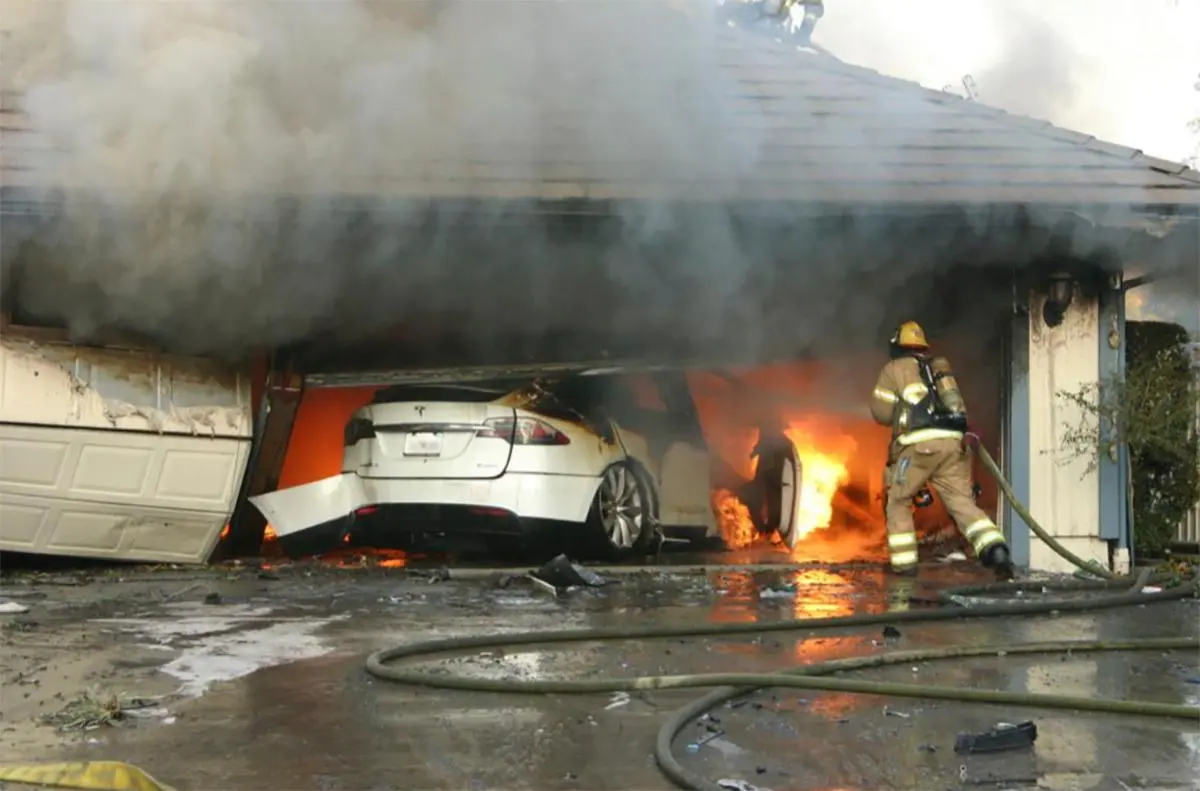
Electric car battery fires, while uncommon, are more likely in the charging phases and often receive a lot of press attention.
Although the fires that occur in electric car batteries are rare, there are many investigations that try to prevent the short circuit caused in one of the cells from triggering a thermal leak that affects the adjacent cells and generates a fire. To solve this problem, a team of researchers from the University of Singapore developed an additional shield located on the separator. between the anode and cathode that prevents the dendrites from growing and the cell from being affected, causing a short circuit.
Read also
- The most expensive average price of ethanol and gasoline was found at gas stations in Rio de Janeiro, with an increase of more than 10% for biofuel
- Senai offers more than 565 scholarships for technical courses with certificates in the areas of civil construction, logistics, petrochemicals, maintenance, work safety and more, guarantee your spot now
- WEG, one of the largest manufacturers of turbines and electric motors in the world, develops a line of niobium-based coatings, resistant against the action of corrosive agents, in partnership with Randon Companies
- Ford, the multinational vehicle manufacturer, calls for 80 vacancies in the free and online course in partnership with Senai Bahia
Dendrites are small, rigid, tree-like structures that grow inside a lithium battery like needle-like projections. These formations can even pierce the separator, which prevents electrodes (cathode and anode) from touching each other. Furthermore, unwanted reactions also increase between the electrolyte, in which these electrodes are immersed and through which the ions travel, and the lithium, accelerating battery failures.
They are generated during battery charge and discharge cycles caused by the agglomeration of lithium atoms and spread like a tumor, accumulating and eventually causing the electrodes to grow. In the most severe cases, the dendrites can pass through the separator, bringing the cathode and anode together and causing a short circuit that could ignite the battery.
Battery fires are very scarce compared to fires in internal combustion vehicles
Cases of battery fires are very rare compared to fires in combustion vehicles and are more likely to occur when they are in the process of recharging. When an electric vehicle battery catches fire, it usually starts with one or more cells. The chemical reactions that take place release a large amount of energy, which can cause adjacent cells to also catch fire. This effect, called thermal leakage, is a fundamental safety issue and can lead to a chain reaction that can last for hours. Fortunately, this circumstance often allows the occupants of the car to get out of it.
To limit these risks, researchers at the University of Singapore have developed a specific layer, a kind of additional shield. located in the separator, which prevents the needle hits the cathode. Instead of preventing dendrites from forming, they decided to use their intrinsic properties by coating the electrode separator with an additional layer of conductive material. that allows the dendrites to be connected. Once this happens, they will no longer be able to grow, preventing them from reaching the other electrode.
Technology has already aroused the interest of several industries
The University of Singapore team was able to test their system on more than 50 battery cells with different materials in its composition. The result of their tests is very encouraging, as none of them experienced short circuits, even during the recharging phases carried out beyond their life cycle.
According to the researchers, the material of this shield is commonly used in the industry so that this technology can be easily integrated into the current separator manufacturing process. On the other hand, the additional cost that the technology would generate in the manufacturing process is estimated at about 5%. Still awaiting the patent, this technology has already aroused the interest of several companies in the sector and will be commercialized by Ntuitive, a spin-up of the University of Singapore.
Tesla Sedan electric car worth R$ 650 bursts into flames after 3 days of use and arrests owner after electronic doors fail
A Tesla Model S Plaid EV caught fire on June 29 in Pennsylvania while the owner was driving, three days after the $129.900 top-of-the-line car was delivered, a lawyer for the driver told Reuters.
The driver, identified as a "business executive", was initially unable to get out of the car because its electronic door system failed, prompting the driver to "use force to push it open", said Mark Geragos of Geragos & Geragos on July 02 this year.













Nissan Versa 2024: a choice…
While the Brazilian army decided…
Toyota is setting up the biggest…
For the first time in America…
Rival car manufacturer…
English would help me in my…
I have the Nissan gear; would like to know…
I'm a boilermaker
With the practically identical characteristics of the four…
Jesus. 145 HP combined?! It must be a…
Unfortunately, if it arrives in Brazil, it will come…
Your calculation is correct, except for the part…
I'm interested, but do I need to know prices?